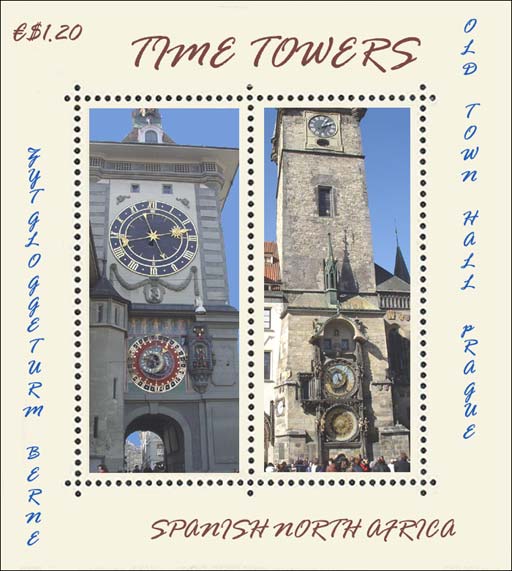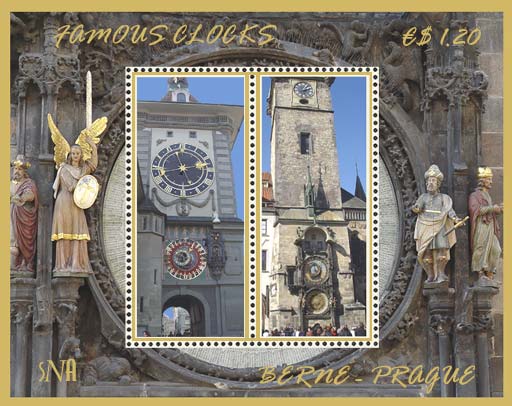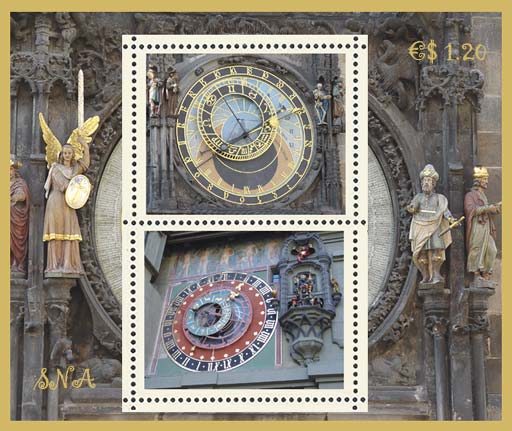|
The Old Town Hall was built in 1338 by
order of King John of Luxembourg. It is one of the most striking buildings
in Prague. Initially, it consisted of just one house, but later a tower and
chapel were added, followed by the attachment of other houses to the main
building. It shows a medieval view of the Solar
System, consistent with what people believed at the time the Astronomical
Clock was built. The clock shows three pieces of information; it shows the
revolutions of the sun, the revolutions of the moon, and the revolutions of
the stars. The earth is at the centre of the universe. The Clock Tower (Zytglogge) The Tower Clock or Zytglogge (in Berndütch dialect - read Zytgloke), as it has been called ever since the earliest times, was in every respect the authoritative building of Berne. Its clock showed the official time after which all the other clocks were set, long before railway or radio existed as a means of checking the time; the distances of the roads were measured from the Clock Tower and it is to do it that the milestones on the cantonal highways refer. In its entrance archway the linear measures, formely "Elle" or "Klafter", now meter and double meter, are put up as standard measures for purposes of official control and as models. The tower used to form the boundary of the first extension of ancient Berne, founded by Duke Berchtold V. of Zähringen in the year 1191. Then the town stretched from the knee of the River Aare to the deep city-moat, which formed the boundary towards the west, on the Kornhausplatz. The nucleus of this tower is without doubt the oldest construction in the city, its inner walls dating back to the 12th century. Like most ancient towers it was open towards the city and its interior and the side facing the town were built of wood. The foundation walls, more than 9 feet in width, diminish slightly in thickness towards the top. In the year 1405 the tower was gutted
and after this fire, the fourth side, which faces the city, was rebuilt in
stone. The tower bell, which was cast in 1405, originally had to be struck
by hand to announce the hours. It was in 1530 that the artistic astronomical
or calendar clock was constructed; and at the time the delightful mechanical
figure-play was made, which is still today a much admired show-piece of the
town. Complete renovation took place between 1981 and 1983. The Astronomical Clock was also made
by Kaspar Brunner. It demonstrates, by mechanical means, the movement of the
stars. The basis of this clock is the Planisphere, which is painted directly
on the wall of the clock tower. Painted in gold are are the turning circle,
the horizon and sunrise/sunset lines , and the temporal hours. The temporal
hours - indicated by Arabic numerals - divide up the day into 12 periods
between sunrise and sunset. Rotating in front of the Planisphere are the
Zodiac and date rings. Above the date ring, the day of the week is shown.
The clock is positioned within an outer circle, which features Roman
numerals indicating the 24 hours of the day. The hour hand is gold in color
and rotates outside the date ring. The hand incorporates a sun, which is
thus able to indicate its position in relation to the Zodiac. At the
opposite end of the hour hand, another sun has an extended ray pointing to
the day and month on the date ring. The inner circle of the Zodiac ring
features a hand showing the orbit of the moon, with a moon ball (half gold
and half black) turning on its own axis. This movement being coordinated
with the sun hand, the visible part of the ball indicates the current phase
of the moon. The SNA set of three souvenir sheets, showing the Astronomical Clock from Prague and the Zytglogge from Bern, was issued on the 20th April 2003. The first two sheets present the tower clocks from Bern and from Prague, respectively . The third sheet displays the astronomical clocks of both towers. The souvenir sheets were printed by the office Courvoisier SNA, in the quantity of 100,000 pieces for each sheet. Other miniature sheets showing the Prague Old Town and the historic city of Berne will follow. Stay tuned!
|


